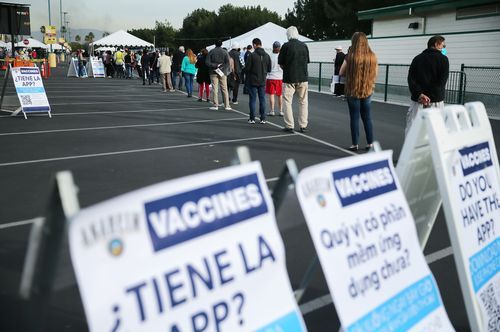The new US Covid-19 test requirement for travelers: What you need to know

All air passengers 2 and older must show proof of a negative Covid-19 test result to enter the United States starting at 12:01 a.m. ET Tuesday, January 26.
The new rule, announced by the US Centers for Disease Control and Prevention on January 12 and underscored by an executive order signed by President Joe Biden, applies to US citizens and legal permanent residents and well as international arrivals.
The testing requirement has sparked confusion and questions among travelers, and some resorts and local governments have scrambled to get prepared to offer testing to US-bound fliers.
The rule does not apply to US land border crossings.
Travel questions — from what kind of Covid-19 test you need to the documentation you’re required to show when you’re at the airport and to whom — are addressed below:
US testing questions answered
What kind of Covid-19 test is considered acceptable for travelers?
Travelers bound for the United State on international flights must have a viral test, according to the CDC. PCR and antigen tests both qualify.
How far in advance can I get tested before entering the country?
The test time frame is no more than three days before your flight.
CDC spokesperson Caitlin Shockey says that if you are flying on a connecting flight into the United States, a valid test is one that is taken no more than three days before your first flight departs to the United States but only if the entire trip was booked under a single passenger record.
Also, each layover between those connections can’t be longer than 24 hours.
If your connecting flight to the US was booked separately or you have a longer connection, you need to get tested within the three days before your final flight departs for the US.
If you are flying out of the country for less than three days, you can take a test in the US before you depart and use it for your return or take a rapid test before your return flight.
If your flight is delayed past the three-day window, you must take another test to board your flight.
I’m visiting a US territory. Do I need to get tested?
No. US territories and possessions such as Puerto Rico and the US Virgin Islands are exempt, according to the CDC.
If I’m a US resident and have to pay for a test while I’m abroad, will my health insurance cover it?
It depends on your insurance plan, says Zach Honig, the editor at large of the travel site The Points Guy. But Honig says that you should definitely file for reimbursement. “It never hurts to ask,” he says.
What kind of documentation do I need to show?
The CDC is requiring fliers to have a paper or electronic copy of their negative test results.
Henry Harteveldt, a travel industry analyst and founder of Atmosphere Research Group, highly recommends that travelers have a hard copy of their negative test results as opposed to having them only on their phones.
“It may be difficult for an agent to read the document on your phone, and you don’t want to give them an excuse not to board you,” he says.
I already had Covid-19. What kind of documentation do I need?
If you’ve recovered from Covid-19 within the past three months, you will need proof that you tested positive in the past three months before your flight as well as a letter from your doctor stating that you’re cleared for travel.
If you recovered from the virus more than three months ago, the CDC’s Shockey says that you will need to retest and show proof of negative results before being allowed to board your plane.
Who is checking test results at the airport?
Airlines must confirm the negative test result for all passengers before boarding and must deny boarding to anyone who doesn’t provide documentation of a negative test or documentation of having recovered from Covid-19, according to the CDC.
It depends on the destination, but you’ll likely be asked for documentation of a negative test result from the first airline employee you have contact with when you’re at the airport, says Harteveldt.
That could be at the ticket counter if you’re checking in bags or with the gate agent if you have no checked bags.
United Airlines has launched a new digital Travel-Ready Center in its app and website that allows passengers to upload required testing records.
Documents will be reviewed by United staff for verification, and passengers deemed “travel ready” will be allowed to complete the check-in process.
“Customers should still plan to bring the physical documents to the airport in case further inspection is needed along their journey,” the airline said in its announcement.
I’m flying to the US by private plane. Does this new requirement apply to me?
Yes, the order applies to commercial and private flights, according to the CDC.
I’ve gotten the Covid-19 vaccine. Do I still need to test?
Yes, the same requirements apply.
How do I find a local testing site while I’m abroad?
It will vary by country, but Honig strongly recommends making sure that you’ll be able to get a test at your destination before you leave the US. “It can be challenging in some places to get tested, so it’s important to get confirmation of a place before your trip,” he says.
The CDC does not provide information about international testing locations. The agency suggests checking US State Department information and checking with local authorities.
You may be able to find a testing location by asking your hotel in advance of your trip or checking the destination’s official tourism site.
In addition, a growing number of hotels, especially in destinations that are popular with American travelers, have started to offer on-site testing.
In St. Lucia, for example, more than 20 properties and villas will offer free rapid testing.
Baha Mar in the Bahamas is offering two free rapid tests per guest room and additional rapid tests may be purchased for $16.80 each through the resort’s Safe Travel Initiative. PCR tests are $134.
At La Colección Resorts throughout the Dominican Republic and Mexico, rapid testing is free.
The return time for test results varies by property.
I’m flying into a state with its own requirements. What should I do?
The CDC says to check and follow state and local recommendations or requirements in addition to federal requirements.
Visitors to Hawaii, for instance, can avoid a mandatory 10-day quarantine by presenting a negative test from a “trusted partner,” a list of which can be found on the Hawaii Covid-19 website.
For air travelers entering Hawaii from abroad, getting a specific type of test — a Nucleic Acid Amplification Test (NAAT) — from one of Hawaii’s approved Trusted Testing Partners will be particularly important because some tests accepted under the new US testing requirement would not allow travelers to bypass Hawaii’s quarantine.
My test result came back positive. Now what?
Shockey says that you should self-isolate and delay travel if symptoms develop or a predeparture test result is positive until you recover from Covid-19.

